Photo

I will no longer be using this account since I have dropped photography.
Follow : @1702457gd to keep up to date with my work.
Cheers🍻
0 notes
Photo

Essay Writing
Finishing Touches
Spent the whole day in the New Brighton Costa doing the final edits to my essay. This included adding the references and putting it into the correct layout.
0 notes
Photo


Essay Planning
Image Analysis
The two images that I decided to analyse was Josef Sudek’s ‘Last Roses’ and Beyonce ‘Heat’ advertisement.
To help guide my essay, I colour coded each point depending on whether they are perceptive, cognitive and ideological connotations.
0 notes
Photo
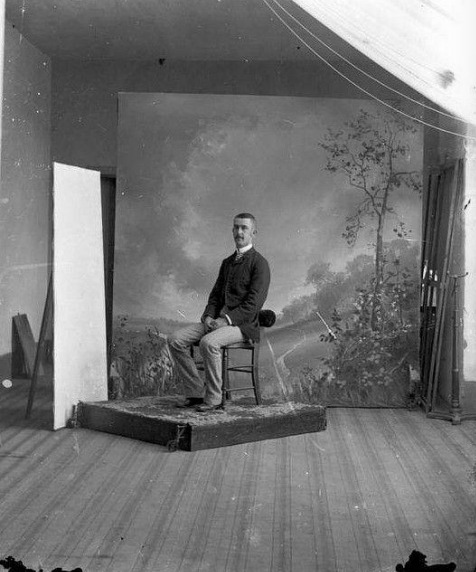
- Lecture 10 | 14.04.18 -
Roland Barthes - Death of the Author and Camera Lucida
Death of the Author (1967)
- ‘Death of the Author’ is a short essay about his ideas on how we respond and interpret the messages we are sent through images an texts.
- Barthes argues hat the producer only has partial control over the meaning.
- He suggests that all ‘messages’ (images and texts) are constructed within a social and political context.
- The reader/viewer has more responsibility to the text than the author.
- The different connotations and experiences that come from the author into the text are hidden when it arrives with the reader.
- The birth of the reader must be at the cost of the death of the Author.
Camera Lucida (1980)
- Barthes only book devoted to photography.
- An enquiry into the nature of photography and a eulogy for his mother.
- The book is personal and subjective.
- It is broken into fragments where he responds to particular photographs that he finds provocative and stimulating.
- He discusses photography from the perspective of the spectator/viewer.
- Barthes is frustrated by the problem of photography which hinges it to reality – “no photograph without something or someone” – Barthes calls this a ‘fatality’.
Key Terms
The operator - The photographer.
The spectator - The viewer of the photograph.
The spectrum - What is depicted in the photograph.
Observed Subject
- “Once I feel myself being observed by the lens, everything changes; I constitute myself in the process of ‘posing’”.
- The transformation is from subject to object – “I experience a micro version of death”.
Key Terms #2
Studium - It is curiosity and can be explained as an interest in the composition, subject matter, action or setting of the photograph. The studium refers to the range of photographic meanings available and obvious to everyone. It is an intellectual engagement with the photograph.
Punctum - Is a “partial object” or detail in the image that attracts and holds my gaze. Inspires an intensely private meaning in the viewer. Something attractive in the detail. The detail is the punctum.
Studium
Unary - The image is a unified and self-contained whole whose meaning can be taken in at a glance.
Coded - Pictorial space is ordered in a universal comprehensible way.
- There is a suggestion that the punctum is undetectable by photographer at the point of capture but which can be seen by the viewer.
0 notes
Photo

- SEMINAR 6 | 07.03.18 -
Denotation and Connotation
1. What is the denotation of the image (the literal/depicted content)?
In the image that I have chosen there is a drinks can with frost and ice going down the sides in the centre and then all around it there are blocks of ice.
2. What is the cognitive connotation (factual elements of the work)?
The drinks can is filled with Diet Coke which has been taken out of the fridge as they say it tastes better when cold.
3. Are there any forms of photographic connotation at work?
They have added a gradient overlay to the image so that the light focusses on the can of Coke, making it stand out and grab the audience’s attention.
4. Is there a linguistic message (text/caption)?
The only text on this image is the text on the can which tells the audience that it is Diet Coke which is a very popular drink.
Does this from of analysis help you understand the photograph better?
Yes and no because we already know everything that is in the image but were just putting it together. But, if it was something that we had never seen it would help quite a lot as we can look at the different elements and then put them together to come to a understanding.
0 notes
Photo
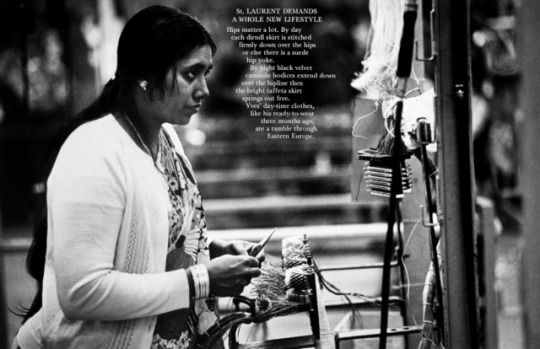
- LECTURE 9 | 28.02.18 -
The Photographic Message
- Roland Barthes - French literary theorist, philosopher, writer and academic.
- His work explains how we can interpret and understand the meanings within photographs.
Key Writing :
- The Photographic Message (1961)
- The Rhetoric of the Image (1964)
- Barthes proposed a way of ‘reading’ photographs using the existing theory of Semiotics.
- The term comes from the ancient Greek word semeion meaning “sign”.
- A way of analysing meanings by looking at the signs which communicate these meanings.
- The audience (readers) work between their experience and message itself to come to a understanding.
Key Theorists
Charles S. Pierce (1839-1914)
- Symbolic, Iconic and Indexical signs
- Icon - Simplest sign since it is a pattern that physically resembles what it `stands for'.
- symbol - Doesn’t resemble what it refers to; it signifies through the force of convention (language). e.g. smoke is an index of fire.
- A sign is composed of a ‘signifier’ which is the form of which the sign takes and then the ‘signified’ which is the concept it represents.
Roland Barthes (1915-1980)
- A message - Is a singular, meaningful unit of which could be a picture or a piece of writing.
- A code - Is an abstraction created by the audience. The idea that comes with the message.
- Realism - makes a image appear ‘natural’ rather than socially and historically constructed.
Photographic Paradox
- The photographic paradox is therefore the coexistence of two messages: the one without a code (the photographic analogue) and the one with a code (the ‘art’ or treatment of the subject, the rhetoric of the photograph).
Denotation/Connotation
- Denotation - What is literally in the photograph and communicate facts e.g large building.
- Connotation - What is suggetsed by the depiction of the viewer which are specific to culture/knowledge e.g. larger building = Buckingham Palace.
Forms of Connotation
- Perceptive connotation - The image is verbalised the moment it is seen (similar to denotation because facts about what is in the actual image are perceived by the audience immediately).
- Cognitive connotation - Factual elements of the picture that are picked out or understood because of the audience’s knowledge.
- Ideological and ethical connotation - The elements in the photograph that create the strongest and most complex message.
Forms of Connotation in a Photograph
- Pose - Position of the figure which contains a message from culture, history, literature and painting.
- Objects - Signifiers and associate with culture. The arrangement and selection creates a connotation in the photograph.
- Aestheticism - Photographs which emulate paintings or other known images with composition.
- Trick effects - The disruption of the credibility of the photograph of reality by creating a false simulation.
- ‘Photogenia’ - Related to technology of photographic production like lighting, exposure and printing to create certain effects such as motion blur, double exposure etc to create connotations within the photograph.
Text and Image
- Text and Image can never be read as the same thing.
- Text can create a new set of signifiers to the image which you would never be able to see in the photograph.
The Rhetoric of the Image (1964)
- Refined initial analysis of photographic meaning that was in ‘The Photographic Meaning’
- This finalised analysis was later put in an essay titled ‘The Rhetoric of the Image’ (1964)
Hidden Messages
- In ‘The Rhetoric of the Image’ and future work, Barthes is concerned with the ‘hidden messages’ that comes with advertising.
- Text and Image come together to create meanings that are culturally created but seem ‘natural’ because they are so familiar.
Multiple Messages of Advertising
- The linguistic message - Words and text that comes with images.
- Non coded iconic message - The literal denotation of the picture.
- Coded iconic message - The connotation of the picture.
0 notes
Photo
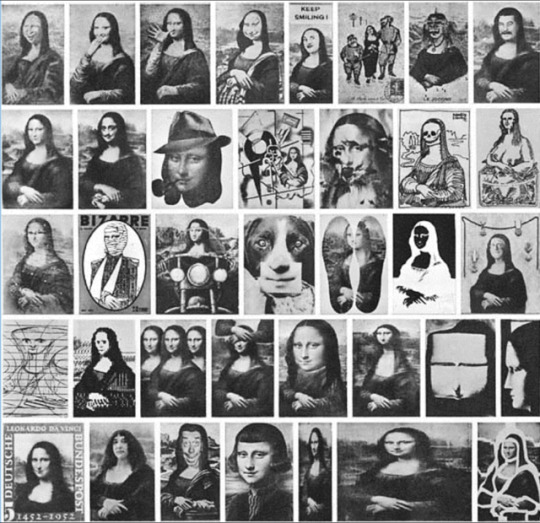
- LECTURE 8 | 07.02.18 -
Towards a Theory of Photography
- Walter Benjamin was a German Jewish literary theorist.
- Worked as a translator and wrote for newspapers and journals.
- He was associated with the Frankfurt School.
- When the Nazis came into power in 1933 Walter Benjamin moved to Paris and continued to write essays and reviews for journals.
- German’s took over France and this lead Benjamin to escape to the US.
- He committed suicide on 26th September 1940.
- His writing on photography had a significant influence on the development of photography theory.
Key Essays
- News About Flowers (1928)
- A Small History of Photography (1930)
- The Author as Producer (1934)
- The Work of Art in the Age of Mechanical Reproduction (1936)
News About Flowers (1928)
- A review of Karl Blossfeldt’s book of plant photographs ‘Originary Forms of Art’.
- The article tells us that photography can reveal new things from the most ordinary objects.
- The transformation of human perception through photography.
A Small History of Photography (1930)
- A brief text about the history of photography.
- However, it develops Benjamin’s ideas of the cognitive and political potential of photography.
- It also introduces his concept of the ‘optical unconscious’.
- We can ‘time travel’ using photography because we can travel back to the time the image was taken.
- What we see are real people, suspended in a singular time and place through the action of having their photograph taken.
The Author as Producer (1934)
- About how writers and artists should work in order to be committed to the aims of socialism.
- They need to actively participate in transforming culture.
- This revolution was found in photomontage pieces, a famous piece by John Heartfield ‘Through Light to Night’ is a good example of this.
- Photographers must become writers and vice versa.
The Work of Art in the Age of Mechanical Reproduction (1936)
- Shows the effects of modernity on art.
- Benjamin’s work on how new technologies of film and photography has transformed sense perception.
- Discussion of the ‘aura’ of a piece of art and ideas of tradition and authenticity, mechanical reproduction upsets this tradition.
Aura - A quality of art works which is undermined by reproduction. Is its distance from us, its unattainability, its uniqueness from which derives its importance and value.
Summary
- Photography transforms us psychologically, culturally and politically.
- We can see the world beyond the capacity of our own eyes using photography.
- Optical unconscious - both of the past and the present.
0 notes
Photo

- SEMINAR 5 | 31.01.18 -
Subjects and Objects
Part One : The Gendered Image - John Berger
1. How does Berger describe the distinction between nudity and nakedness?
Naked = Without clothes and to be ones self.
Nude = Like a disguise and have an awareness of being seen.
2. What do the panel say about the distinction between painting and photography in the depiction of women?
Paintings = Unrealistic and exaggerated/idealised.
Photograph = More real than a painting and not exaggerated - advertising.
3. What distinguishes the presentation of the man and the woman in each image?
Clothing, pose, facial expression, body language and lighting.
4. Describe what you see in each picture, referring to Berger’s ideas about how the model is presented and the likely viewer of the image.
Left = Very masculine image that has been used to advertise a watch. His hard facial expression and body language almost looks like he is analysing something - both conforming to the stereotypes given to men which are that they are dominant, aggressive, and the bread winner.
Right = A feminine image that has probably just been used for a magazine. Her soft face with the low cut top and hair slightly in front of her face also conforms to stereotypes given to women which are that they are vulnerable and are used for pleasure by men. Her body is leaning forward slightly, giving the impression she is offering herself.
5. Are there examples which seem to subvert Berger’s claims? If so, why?
No
Part Two : ‘Taking Photographs’ - Susan Sontag
1. What contrasts are there between the two photographers work?
Gilden = Random and in their face.
Davidson = Thoughtful and 10 second love affair.
2. What ideas about photography are suggested by the way they approach their subjects?
Gilden = Agressive approach creates a more interesting image.
Davidson = Invisible approach creates a more realistic image.
0 notes
Photo
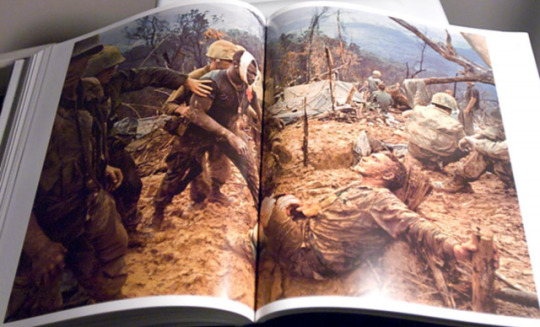
- LECTURE 7 | 24.01.18 -
Analysing Photographs
- John Berger ‘Ways of Seeing’ (1972).
- What we see is always influenced by many assumptions concerning beauty, nature, taste and gender.
- “The relation between what we see and what we know is never settled”.
- Susan Sontag ‘On Photography’ (1977).
- Sontag’s book addresses the problems, both aesthetic and moral, posed by the omnipresence of photographed images.
- Both writers looked at social and cultural context of image production and reception.
- Ideology is a collection of beliefs held by an individual, group or society.
- It can be described as a set of conscious and unconscious ideas which form one’s belief, goals, expectations and motivations.
John Berger’s key ideas :
- The relationship between seeing and knowing.
- The impact of the camera and imagery reproduction on our way of seeing.
- The portrayal of women.
- The image-world created though advertising.
Seeing and Knowing - Chapter 1
- The way we see things is affected by way we know or believe.
- We never just look at one thing. We look at the relation between things and ourselves.
The Gendered Image - Chapter 3
- Berger argues that according to the usage of ideology the social presence of a woman is different to that of a man.
- A man’s presence is dependent on the promise of power he embodies - always exterior.
- It suggests what he is capable of doing to you or for you.
- A woman’s presence expresses her own attitude to herself.
- It suggests what can and cannot be done to her.
- “Men look at women and women watch themselves being looked at.”
- Male view on naked paintings and women who view these naked paintings are expected to have a male attitude.
Susan Sontag key ideas :
- The ethics of taking and viewing photographs.
- World view created by photographic seeing.
- Psychological effect of mass production and distribution.
- Voyeurism and power relations expressed through photography.
- Strictly speaking no one ever understands anything from a photograph.
- A photograph only shows us the surface.
- A camera makes everyone a tourist in other people’s reality and soon enough in their own.
- Boredom and fascination both depend on being outside rather than inside the situation and they both lead to each other.
- The photograph changes according to the context in which it is placed.
0 notes
Photo
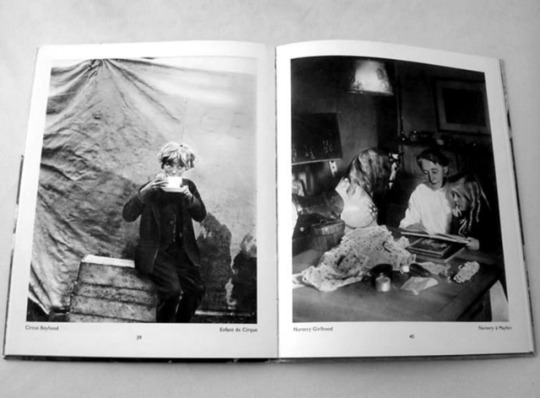
- LECTURE 6 | 17.01.18 -
Ethics of Photography
“To photograph is to appropriate the thing photographed.” - Susan Sontag (1977).
- Cameras were tools of truth and authenticity.
- The goal of a photographer’s work was to bring attention to the subject/object within the photograph and “pave the way for social change” - Karin Becker Ohrn (1980).
- Lewis Hine was a photographer that followed what Ohrn said and wanted to inspire change. Most of his work revolved around the working class and how their working conditions need to change.
- During the 1930s many photographs captured ‘social problems’ and they argued for reformation and social eduction.
- People believe that the more edited / ‘aestheticised’ an image becomes makes it less truthful. But, David Levi Strauss thinks that needs to be questioned...”To represent is to aestheticise; that is, to transform.”.
- Brandt focussed on the lower classes but not in a way that condescended them. He photographed all classes with some sympathy, using his book he shown the contrasts between them all in ways that have never been shown before.
- However, Robert Frank didn’t want to romanticise the subjects. He wanted to present them in the way he seen them, in their pure and simple form.
- Similarly to Robert Frank, William Klein’s ‘Life is Good and Good For You in New York’ was showing people what they didn’t want to see and wasn’t romanticising the idea of New York.
- In the 1960s people’s aim was not to create change life but to know it, to understand it. - John Szarkowski (1967).
0 notes
Photo

- Library Session | 22.11.17 -
Using the Library Electronic Resources
During this library session we were taught how to use the library electronic resources to help us find the correct books for our work. Before this session I thought that we had to go through every photography book and try and find relevant information but the website makes it so much easier.
Due to me doing my essay on Lewis Baltz all I had to do was type his name into the search bar of the website and then it came up with hundreds of books, journals and online articles that feature him and his work. From this i gathered all of the codes given to those specific books and went to find them.
Another thing that I learnt how to do was request for books to be sent to the Kingsway campus since that would be a lot easier for me as I don’t live in accommodation.
One of the things that I found most useful about this session was that we can put the books that we are going to use in our essays in a ‘basket’ and when we go to that we can put them in a APA format ready to be put in our essay.
0 notes
Photo
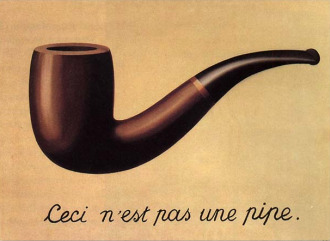
- LECTURE 5 | 13.12.17 -
Post Modernism & Photography
`Modernism
Modernism refers to the work produced in 1870-1970.Was a rejection of traditions during the Renaissance.Was not just an art movement.
Principles
Experimentation.
Rejection of history.
Emphasis on materials and form
Characteristics
Abstraction - true to form.
Progressive.
Artist’s vision is represented.
Art matters and has real value.
Post Modernism
Used in the 1970′s to describe the changes seen to take place in Western society.
Began with Pop Art and embraces conceptual art.
Principles
Complexity.
Contradiction.
Ambiguity.
Characteristics
Collapses the distinction between high culture and popular or mass culture.
Removes the boundary of art and everyday life.
Refuses to recognise the authority of a single style.
Jean Francis Lyotard
The idea that history is progressive.Knowledge can liberate us.‘Master narrative’ or ‘meta-narrative’ serves to legitimise the authority of existing cultural norms.
The ‘End’ of Art - Arthur C Danto
Andy Warhol’s discovery that everything including a pile of Brillo boxes can be art.
It is described by Danto as the end point but also as the high point of the ‘revolutionary period’ of modernism.
After this discovery there were no more boundaries to cross.
Representation
Fredrick Jameson.
“Pastiche is…the imitation of a peculiar or unique style, the wearing of a stylistic mask, speech in a dead language.”
Feminism
Craig Owens.
Draws attention to the convergence of the ‘feminist critique of patriarchy’ and ‘the postmodern critique of representation’.
Appropriation
Reusing the past and repurposing them.Robert Heinecken - Mass media appropriation.Richard Prince - Magazine adverts appropriation.Doug Richard - Google Maps/Internet appropriation.
Hybrid Forms
Intention is not to provoke feeling but thought.
Photography and cinematography.
Thomas Demand - Photography and Sculpturing.
0 notes
Photo

- SEMINAR 4 | 06.12.17 -
More Than Looking : Analysing Images
what is your first impression of this image?
It is quite plain at first sight making it boring but it makes me want to look and study it more.
What senses can you draw on to understand the image?
When looking at this image I think it would smell like chemicals due to it being a photo of a warehouse. Also I think that the building and the floor would feel quite smooth in contrast to the rough texture of the dirt in front of the building. I believe that it would taste like a cheese sandwich, mainly because many manual workers have these for their lunch but apart from that I think that it would taste like dirt and chemicals due to the building and machinery. Finally, I think that it would sound like chains hitting each other and large machinery being used.
What might have happened just before this image was taken?
Before this image was taken I think that Baltz was working in one of the warehouses near by and this was taken while he was on his lunch break.
What fundamental components is the photographer drawing on?
This image is very geometric like other pieces of his work. It alludes to the idea that the building and everything in it is man made due to it being unnatural and not free flowing.
What is the photographers intention?
I think that Lewis Baltz’s intention was to illustrate how the buildings all around us are man made and it is destroying the Earth which is symbolised by the pile of dirt.
0 notes
Photo

- LECTURE 4 | 29.11.17 -
NEW AND OLD WORLDS : Photography & Modernism
American Modernism
‘Straight’ - American modernist photography.
Stieglitz promoted modernist photography, straight, unmanipulated and documentitive.
Alfred Stieglitz ‘The Steerage’.
Paul Strand, friend of Stieglitz went on to create very abstract work away from pictorialism ‘New York’ and ‘Geometric Backyard’.
Strand made a series of candid street portraits with a prismatic lens that allowed him to point the camera in one direction and take the photo at a 90 degree angle. ‘Man in a derby’ and ‘Yawning Woman’.
Modernist photography is about composition and selection. Almost metaphorical and allusive but looked documentitive.
Paul Strand ‘Wall Street’.
Full realisation is accomplished without tricks but through straight photographic methods.
Modernism is characterised by constant innovation.
It started when Courbet started to put himself in his paintings. ‘Bonjour Monsieur Courbet’.
Modernism - straight lines and functional.
Beaumont Newhall - “Calls photography at its medium ‘honest’ but with anything else ‘deceitful’”.
Edward Weston was the founder of the ‘f/64 group’ of purist photographers in 1932 with Ansel Adams, Willard Van Dyke, Imogen Cunningham, and Sonya Noskowiak.
Ansel Adams ‘Mirror Lake, Morning’
European Modernism
What photography could do for people.
A lot of disruption in Europe like the world war.
Didn’t worry about composition and purity, unlike American modernism.
Europe embedded in the culture of the people making and seeing it.
The ‘New Vision’ was an optical science and objectivity, an awareness that the camera can do what the human eye can’t.
Allowed unique perspectives and viewpoints.
Purity of form but serving a different purpose.
Rodchenco apart of a Russian constructivism.
Differences
US
Narrow and formal.
Focussed on fine art print.
Narrowed photography’s focus.
EU
Seen as culturally and socially progressive.
Widened photography’s focus.
Collage/Montage
Photo montage and typophoto.
Hannah Hoch is an important member of the Berlin Dada movement.
She created humorous and moving commentary on society during the time of tremendous social change - World War.
Modernism in Germany
New objectivity - A new style in Germany in the 1920s.
Return to unsentimental reality.
Review the world as it was.
Ed Ruscha ‘Twenty six gasoline stations’.
New Objectivity
New typographics.
Lewis Baltz photographing in industrial parks.
0 notes
Photo





- SEMINAR 3 | 15.11.17 -
More Than Looking - Text & Image
Denotation - What is actually there
Connotation - Meaning behind elements
Activity 1
Analyse the images that we put onto the Flickr page using the denotation and connotation definitions to help us.
Denotation - Red light on the back of a car. Connotation - Stop, Danger.
Denotation - Chain on a piece of wood. Connotation - Humans have locked nature up so that it can no longer grow and then use it for personal purposes only.
Denotation - Hole in glass/acrylic. Connotation - Violence to nature, spider web, bullet hole, spreading disease.
Denotation - Holes in concrete. Connotation - Bullets in the ground, set in stone and will always be remembered.
Denotation - Different coloured wiggly lines in a circle. Connotation - Circle of life, nothing is straight and simple.
Activity 2
Create a short story to give us a context to a picture. What happened before and after the image was taken.
Before
Man goes to the hospital to get his results.
The doctor tells him that it’s not good.
He shows him the scan of his brain (picture 3)
After
The doctor tells him that it will be a long road to recovery.
The man goes home to tell his wife his news.
They both lay awake that night thinking of all the possible scenarios but alone in their heads.
0 notes
Photo
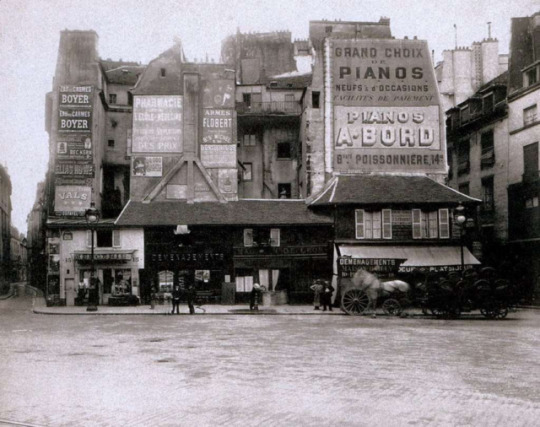
- LECTURE 3 | 8.11.17 -
The Artist With A Camera : Eugene Atget
His work includes :
Hard contrasts
Empty streets
Strong shadows
Open gates
Intersecting forms
Outside/inside buildings
The photograph was seen as a memory trace.
It has a relationship with history.
Commercial photographer in 1890.
Specialised in photos of Paris that he then sold to other artists and craftsmen.
Paris went under refurbishment where 20,000 buildings were demolished and 30,000 were rebuilt.
Atget documented the demolishment of buildings.
Attention on new market created by interest in Old Paris.
His photographs included architecture and decor.
A series titled “The Art of Old Paris” consisted of 3,000 pictures.
The pictures were in a pictorial documentary style .
His equipment consisted of a 18-24cm view camera with glass plates.
He went out to take pictures in the mornings because there were less people.
Needed long exposures (f/64).
His work was criticised by the commission due to all of the sign boards and horse manure.
Returned to certain places “coin due de seine” 91924, 1911, 1905
“Realism unadorned”.
He would photograph people in context.
“Modern Paris” a series to illustrate the difference of living in rich and poor homes.
Surrealists loved his work due to ghostly figures created by long exposures.
1969 MOMA exhibition.
Jaeques - Henri Lartigue had a show at MOMA in 1963.
His Paris is modern, bright and fun.
He used a small camera.
Captured a completely different world to Atget.
Dynamic imagery.
Final Thoughts
Atget is a example of how they are interpreted and re-contextualised.
There is a gap between intention and interpretation.
Atget on documentary.
0 notes